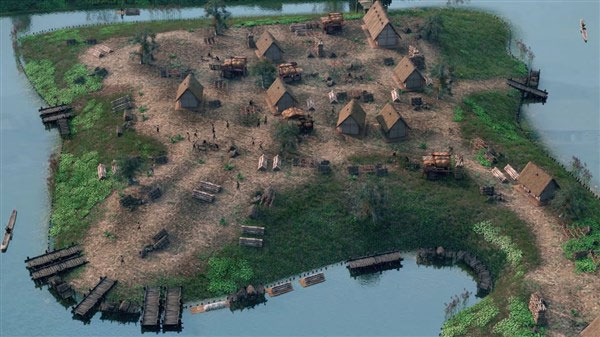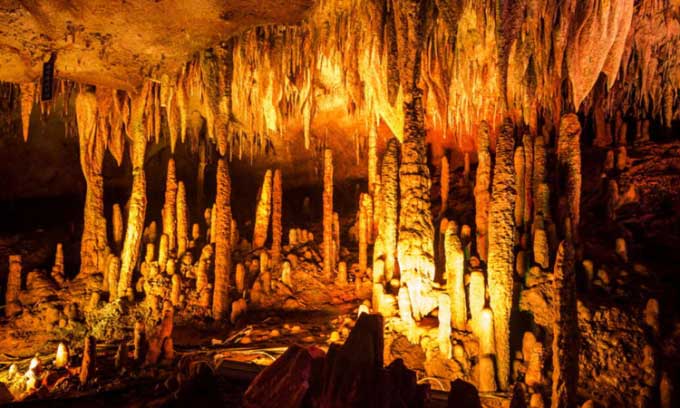The city of Liangzhu with its complex water canal system, existing over 5,000 years ago, may face extinction due to climate change.

Simulation map of the prosperous Liangzhu city.
Liangzhu, located in the Yangtze River Delta, China, achieved remarkable technical advancements 5,300 years ago and may have been the only city in the world capable of such feats during that period. Its intricate network of canals and dams earned it the title of “Venice of the Stone Age” or “Eastern Venice.” However, nearly 1,000 years later, the city and the Liangzhu civilization unexpectedly collapsed, and the reasons for this remain a topic of debate.
Liangzhu was once recognized by UNESCO as a World Heritage Site. Based on archaeological remains, scientists have found numerous pieces of evidence indicating advancements in social, cultural, and technological aspects during this era.
The most significant development occurred in agriculture and aquaculture. The people of Liangzhu constructed an intelligent hydraulic system that directed water into canals, dams, and lakes, transforming the city into the “Venice of the East” during the Stone Age. During this period, residents typically built stilt houses elevated above the ground near canals, ditches, or coastlines.
It is estimated that the area of Liangzhu city covers 290 hectares, surrounded by clay walls with six large gates. Each direction—North, East, and South—features two solidly constructed gates. The city center houses a palace spanning 30 hectares, designed with flood-resistant architecture.
Surrounding the area are numerous earth mounds and natural hills. This entire construction indicates that the people of Liangzhu built a relatively complex social structure, exhibiting many “timeless” characteristics.

Shennong Cave in the Yangtze Valley sheds light on the fate of Liangzhu, one of the greatest cities of ancient times. (Photo: Haiwei Zhang)
Professor Christoph Spotl from the University of Innsbruck and colleagues suggest that temporary climate changes may have caused severe flooding that even such an advanced water canal system could not withstand, as reported by IFL Science on November 24. The new study was published in the journal Science Advances.
At a time when most places in the world had not yet discovered agriculture, Liangzhu pioneered hydraulic engineering. The city was enclosed by walls to deter invaders, but the real highlight was the network of canals that enabled residents to cultivate vast areas of naturally flooded fertile plains.
The achievement of creating such an ancient wonder by a civilization that had not yet discovered metallurgy is remarkable. However, Spotl is more interested in why a city that stood for so long ultimately collapsed. He and his colleagues correlate the timing of the collapse with changes in the severity of the rainy season.
“A thin layer of clay found in the ruins indicates that the downfall of this advanced civilization may be linked to floods originating from the Yangtze River or the East China Sea. There are no signs of human-induced causes such as conflict or war,” Spotl stated.
To investigate whether floods were the cause, the team studied climate changes in the Yangtze River Valley over the past 100,000 years, using stalagmites from Shennong Cave and the Mekong River. The rate of limestone deposition in these caves provides some information about rainfall during that period, while carbon isotope analysis offers higher accuracy.
Approximately 4,345 – 4,324 years ago, the valley experienced a significant increase in rainfall. This timing aligns with the collapse of Liangzhu, including the margin of error of the study.
“Heavy rains during the rainy season could lead to severe flooding of the Yangtze River and its tributaries. The natural disasters were so severe that even the complex canal and dam systems could not withstand such a massive volume of water, leading to the destruction of Liangzhu and forcing the residents to evacuate,” Spotl explained.
If things quickly returned to normal, perhaps the survivors would return to the city. However, evidence in the caves suggests that heavy rainfall continued for 300 years afterward. The frequency of these rains may have been so high that, during that period, the city could not recover. By the time the climate returned to conditions similar to Liangzhu’s golden age, the city had become a legend for the descendants of those who once lived there.


















































